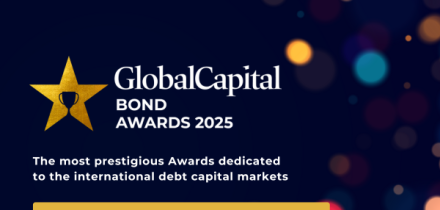Sustainability-focused investing is long established in capital markets. Green bonds are now familiar products and fixed income investors are already happily buying other forms of debt such as social bonds.
Derivatives have lagged finance’s ESG boom, but that is changing with remarkable pace. Investors with large ESG mandates are demanding risk management tools and exposures to an increasing array of investible themes. Always eager to innovate, bankers are happily responding.
Sell-side strategy has quickly moved beyond winning publicity and market share — although that is still clearly a motivation for firms — to take on an increasingly sophisticated hue. Bankers are rapidly moving from questions around methodology to evaluating issues such as how to measure ESG volatility and refining their suites of structured products capturing the theme.
“Innovation in ESG derivatives is blooming,” says Isabelle Millat, head of sustainable investment solutions, global markets at Société Générale in Paris. “It is taking various different forms and you can find diverse realities under one theme. In general, the appetite for ESG from all types of clients, both corporates and investors, on the institutional and retail side is growing for very diverse reasons.
“These include the motivation to do well from long-term investors, to look good — which as long as you are walking the walk is fine — and the need to comply with regulatory pressure which is mounting in Europe.”
For Millat, the next step in the growth of bank-produced structures will be standardisation. Both for reporting standards and for product creation.
“Until now structures have been really bespoke,” she adds. “You talk with clients, listen to them and come up with proposals. Then usually what you eventually produce is a co-creation. What is now needed is standardisation — this will create additional scalability in the ESG derivatives market’s growth.
“We will always need customisation, but some level of standardisation in reporting and investing will be crucial for scalability in that market.”
Lessons from the listed market
Here, bankers can learn lessons from the exchanges. In Frankfurt, Eurex has hosted an ESG derivatives market for more than a year now. Trading has grown healthily and big ESG investors who are not yet active are interested in entering the market.
Here the lesson has been to keep it simple, at least at first. The nascent ESG derivatives market was one with an underlying asset whose definition is open to much debate. Faced with a range of ESG definitions and models, Eurex went for the most easily explainable ESG structure it could — applying an exclusion methodology to already popular equity indices.
“When looking to establish a new liquidity pool, a typical path is taking an existing pool, in this case the Stoxx Europe 600, and using its liquidity as the basis for new ESG contracts,” says Zubin Ramdarshan, head of equity and index product research and development at Eurex in Frankfurt.
“One thing we have learned is that simplicity is likely to win.”
As the market grows, participants are expecting greater complexity to filter through. Opinion already varies greatly on what the best methodology is for achieving ESG outcomes. Buy-side firms are applying more finesse to these strategies, with some moving away from what they see as the blunt exclusion method. Derivatives bankers can expect that demand to filter into their products.
“At the end of the day we are trying to serve the end clients, which are mainly asset managers,” adds Randolf Roth, member of the Eurex executive board. “They want exposure to an index such as the Euro Stoxx 50 but don’t really want to invest into companies which produce, for example, controversial weapons, or companies deriving revenues from tobacco or thermal coal.
“On the other side there are investors who strongly believe that companies with better ESG scorings outperform other companies because they simply have better business models. Index providers then combine all sorts of models on those two building blocks of strategy.”
Green shoots in credit
The equity derivatives market is far ahead of other asset classes in building ESG product. But other desks are catching up. As they structure derivatives, many are coming across the same challenges as their equity colleagues in defining what ESG is as an underlying factor and then achieving standardisation.
“There are many similarities in what has been happening in equity with credit where one of the main challenges is data,” says Denis Gardrat, head of credit structuring at JP Morgan in London. “ESG remains an evolving concept and reporting standards are still in their infancy, with short histories (a decade of usable data at best), limited coverage (a bigger issue for high yield than investment grade), low frequency score updates and finally ESG rating dispersion.
“On the last point, for example, when comparing these scores, the correlation between different ESG agencies is low; on the other side, if you look at credit ratings, they are broadly consistent and show high correlation between providers. As a result, investment decisions and performance can be sensitive to the choice of ESG data provider.”
Steps towards some forms of standardisation are being made, though. In March, IHS Markit released its first ESG screened version of the iTraxx index, creating an opening for greater ESG liquidity in the credit derivatives market.
Liquidity has not been quick to develop in the new index. But market participants attribute this in part to its launch during the early days of the Covid-19 crisis. Many asset managers have been too busy dealing with wild market swings and the operational challenges of remote working to open lines for new products.
Unlike in equity derivatives, where multiple index providers compete, IHS Markit is dominant in credit derivatives index creation, which should give it a good chance of being a lodestar for ESG trading.
If liquidity does grow, then it could create a base for standardisation and volume growth in a market that is innovating fast but dominated by bespoke structures.
“IHS Markit is trying to promote an equivalent of the main iTraxx crossover for ESG that would be high velocity and highly liquid,” says James Howard, co-head of cross asset investor products at Credit Suisse in London.
“That is something that you can then bolt on to structured products very easily, in contrast to a bespoke index.”
But Howard adds that a liquid credit index is unlikely to reduce product creation in the bespoke corners of the ESG market.
Again, the range of opinions on what constitutes an effective ESG strategy will drive the demand for more customised products for a time to come. Some of the world’s largest money managers will continue to demand proprietary index creation for their own tailored ESG strategies.
“There will be room for both,” says Paul Bajer, global head of credit structuring at Credit Suisse in London. “Indices where the index calculation agent is screening companies according to ESG criteria makes a lot of sense. In ESG you need some validation agent to determine who meets the criteria, an independent party accepted by investors. So the index space will be really critical for ESG.
“But, that said, for some issuers that are specifically ESG focused like the World Bank, which is developing products that track ocean sustainability, there is huge demand as well. Like all areas of finance, there is probably room for both.”
Much is still up for grabs in the rapid build out of ESG derivatives. The fast pace of innovation in the market can give cause to pause and wonder if product creation is taking priority over actually thrashing out the most effective tools for achieving ESG goals.
But at least at this stage, the goals of ESG are worthy enough for innovation to be considered a good thing. Plus, a period of experimentation as market participants try out these new products is no bad thing either.
Beyond the obvious marketing benefits, the basic functions of derivatives mean that they can be a useful tool for ESG goals, if designed properly. In Europe, finance will form a key part of the European Union’s Green Deal. Derivatives will be a needed string on that bow.
“When we talk about sustainability, derivatives are not the first thing that come to mind,” says Apostolos Thomadakis, researcher at the CEPS think tank and co-author of a recent paper on the role of derivatives in sustainable finance.
“But when you think about it, there are certain features and characteristics in derivatives that tend to be helpful in achieving the three main goals of the sustainable investment action plan. First, to move capital towards sustainable economies and investments; second, to mainstream systems’ ability for risk management, and also to promote transparency and a long-term approach. Especially with the post-2008 regulation, derivatives have become a bit more transparent than before.”






